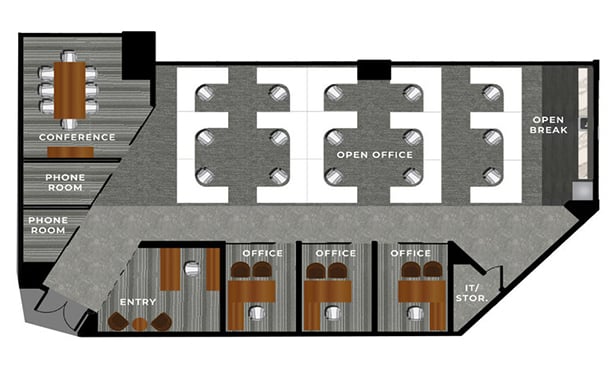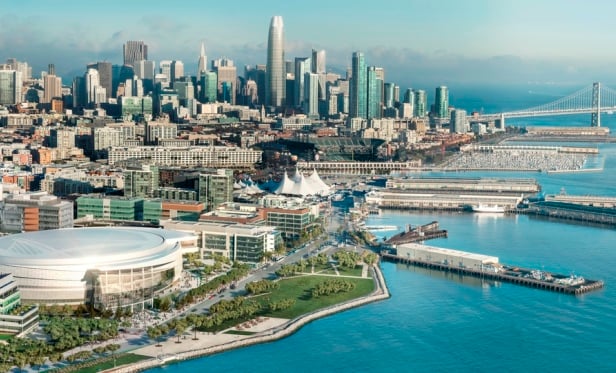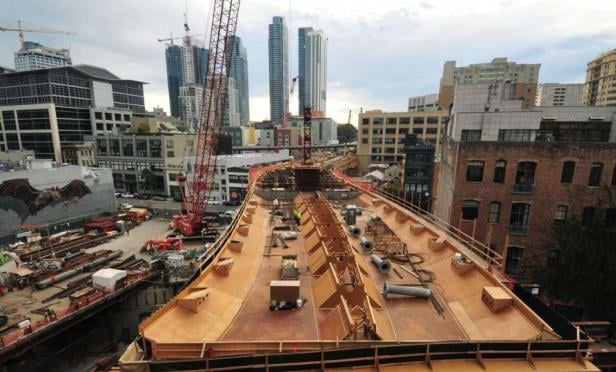NEW YORK CITY—The significant real estate development that has taken place in New York City the last few years has been rather noisy, not only in terms of grabbing headlines both here and around the world but in the high decibel levels that are causing many city residents to run for some relief from the medicine cabinet.
New York State Comptroller Thomas P. DiNapoli reports that noise complaints called into New York City's 311 system have more than doubled in recent years, rising from 14,259 in 2010 to 37,806 in 2015. At the same time, the number of after-hours work permits issued by the city's Department of Buildings has increased.
The state comptroller's report notes the number of complaints about construction noise in New York has increased significantly in recent years. However, the audit notes the New York City Department of Environmental Protection and the Department of Buildings, the agencies primarily responsible for addressing noise complaints, “collectively had limited impact in mitigating protracted noise problems. Communication and coordination between DEP and DOB were extremely limited, and neither agency adequately leveraged pertinent noise complaint data from New York City's 311 system. DEP investigations rarely resulted in violations for unreasonable noise.”
“Construction is reshaping the city's skyline but the accompanying noise of construction activities is not always welcome by New Yorkers,” DiNapoli said. “The city Department of Buildings has allowed noisy work to take place on thousands of projects well before and after normal construction hours. Communication between the city's Building Department and Department of Environmental Protection must improve and the after-hours permitting process needs to be revised to muffle persistent noise problems across the five boroughs.”
The report states further that the Department of Buildings granted a considerable number of after hours variances for construction work, including sites for which multiple noise complaints had been filed. “As a result, certain locations, which have had numerous noise complaints lodged against them, continued to operate without having to address those issues,” the report notes.
According to data from the city's 311 system, from Jan. 1, 2010 through Dec. 31, 2015, there were 141,125 complaints made about construction noise, the majority of which were concerning after-hours activity. According to the city's noise code, allowable construction hours are weekdays between 7 a.m. and 6 p.m. Construction activities outside those hours are in violation of the code, unless DOB issues a permit to allow such construction.
Auditors from the state comptroller found there was minimal communication between DEP and DOB regarding noise complaints and there was no formal process for sharing information about problematic construction sites, particularly those with a high number of noise complaints.
During the audit period of Jan. 1, 2014 and June 30, 2016, there were 90,861 construction-related noise complaints filed with the 311 system; 67,282, or 74%, of the complaints were for construction noise before or after permitted hours.
Auditors selected a sample of noise complaints for 50 incident addresses, including the 30 locations with the highest number of construction noise complaints in the city (29 of which were in Manhattan) and an additional five locations with the most complaints in the Bronx, Brooklyn, Queens and Staten Island. DiNapoli's auditors found that 2,044 of the 2,683 construction noise complaints for the sampled locations were for construction before- or after-hours. During this same time frame, DOB issued 2,632 AHVs for these locations.
The audit found that when making decisions to grant after hours work variances, DOB officials did not consider construction noise complaints made to 311, nor did they consider construction noise citations issued by DEP Therefore, the audit charges that DOB is allowing contractors to obtain continuing extensions of existing AHVs or multiple AHVs for the same construction sites without critical review.
The report notes that an after hours variance was issued for 100 East End Ave. in August 2015, and DOB subsequently approved 24 consecutive electronic renewals that lasted through July 2016, even though the work site was within 200 feet of a residence and was the subject of 112 noise complaints due to after-hours construction.
The State Comptroller issued six recommendations to the New York City DEP and three to the Department of Buildings. Among some of the key recommendations to the DEP, besides improved communication with the DOB, include conducting better analysis of 311 system data and shortening response times to visit construction sites where noise complaints have been lodged. The State Comptroller's recommendations to the DOB mainly concerned improvements to the process of issuing and renewing after hours variances.
DOB officials agreed with all three recommendations in the audit. In their response, DEP officials agreed with three of the six recommendations and indicated that improved coordination with DOB is a priority.
“With a boom in construction in recent years, some neighborhoods have seen a rise in construction-related complaints, and it is for this reason, that DEP is increasing the number of inspectors on staff in 2017 by five from 57 to 62 inspectors,” stated Angela Dicata, deputy commissioner, bureau of sustainability for the New York City DEP in a June 30th letter to the State Comptroller's office in connection with the audits findings. She added that handheld tablets will provide DEP inspectors with more information about noise complaints and that the agency was considering “improvements to enforcement and requirements to better and more quickly respond to construction-related noise complaints.”
The state comptroller's report notes the number of complaints about construction noise in
“Construction is reshaping the city's skyline but the accompanying noise of construction activities is not always welcome by New Yorkers,” DiNapoli said. “The city Department of Buildings has allowed noisy work to take place on thousands of projects well before and after normal construction hours. Communication between the city's Building Department and Department of Environmental Protection must improve and the after-hours permitting process needs to be revised to muffle persistent noise problems across the five boroughs.”
The report states further that the Department of Buildings granted a considerable number of after hours variances for construction work, including sites for which multiple noise complaints had been filed. “As a result, certain locations, which have had numerous noise complaints lodged against them, continued to operate without having to address those issues,” the report notes.
According to data from the city's 311 system, from Jan. 1, 2010 through Dec. 31, 2015, there were 141,125 complaints made about construction noise, the majority of which were concerning after-hours activity. According to the city's noise code, allowable construction hours are weekdays between 7 a.m. and 6 p.m. Construction activities outside those hours are in violation of the code, unless DOB issues a permit to allow such construction.
Auditors from the state comptroller found there was minimal communication between DEP and DOB regarding noise complaints and there was no formal process for sharing information about problematic construction sites, particularly those with a high number of noise complaints.
During the audit period of Jan. 1, 2014 and June 30, 2016, there were 90,861 construction-related noise complaints filed with the 311 system; 67,282, or 74%, of the complaints were for construction noise before or after permitted hours.
Auditors selected a sample of noise complaints for 50 incident addresses, including the 30 locations with the highest number of construction noise complaints in the city (29 of which were in Manhattan) and an additional five locations with the most complaints in the Bronx, Brooklyn, Queens and Staten Island. DiNapoli's auditors found that 2,044 of the 2,683 construction noise complaints for the sampled locations were for construction before- or after-hours. During this same time frame, DOB issued 2,632 AHVs for these locations.
The audit found that when making decisions to grant after hours work variances, DOB officials did not consider construction noise complaints made to 311, nor did they consider construction noise citations issued by DEP Therefore, the audit charges that DOB is allowing contractors to obtain continuing extensions of existing AHVs or multiple AHVs for the same construction sites without critical review.
The report notes that an after hours variance was issued for 100 East End Ave. in August 2015, and DOB subsequently approved 24 consecutive electronic renewals that lasted through July 2016, even though the work site was within 200 feet of a residence and was the subject of 112 noise complaints due to after-hours construction.
The State Comptroller issued six recommendations to the
DOB officials agreed with all three recommendations in the audit. In their response, DEP officials agreed with three of the six recommendations and indicated that improved coordination with DOB is a priority.
“With a boom in construction in recent years, some neighborhoods have seen a rise in construction-related complaints, and it is for this reason, that DEP is increasing the number of inspectors on staff in 2017 by five from 57 to 62 inspectors,” stated Angela Dicata, deputy commissioner, bureau of sustainability for the
Want to continue reading?
Become a Free ALM Digital Reader.
Once you are an ALM Digital Member, you’ll receive:
- Breaking commercial real estate news and analysis, on-site and via our newsletters and custom alerts
- Educational webcasts, white papers, and ebooks from industry thought leaders
- Critical coverage of the property casualty insurance and financial advisory markets on our other ALM sites, PropertyCasualty360 and ThinkAdvisor
Already have an account? Sign In Now
*May exclude premium content© 2024 ALM Global, LLC, All Rights Reserved. Request academic re-use from www.copyright.com. All other uses, submit a request to [email protected]. For more information visit Asset & Logo Licensing.









